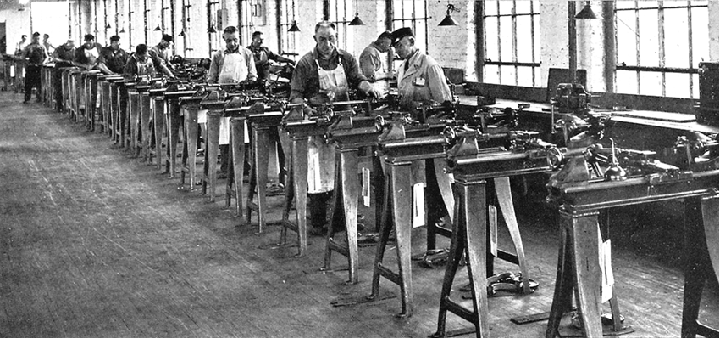|
Home Machine Tool Archive Machine-tools Sale & Wanted South Bend literature is available South Bend Lathes Home Page |
|
Compared to the original 1937 version, this 1941 pedestal countershaft shows evidence of material and time saving - as well as cost cutting - with the twin turnbuckles and over-centre locking cams replaced by just one combined push-bar acting against the centre of the unit. This was a perfectly adequate mechanism, of course, but the ability to slightly "skew" the line of the countershaft pulley to get the belt running exactly in line was lost. Also missing was a solid push on each side of the upright that previously had ensured the greatest possibly rigidity no matter which speed was in use. |
||

|
|
||